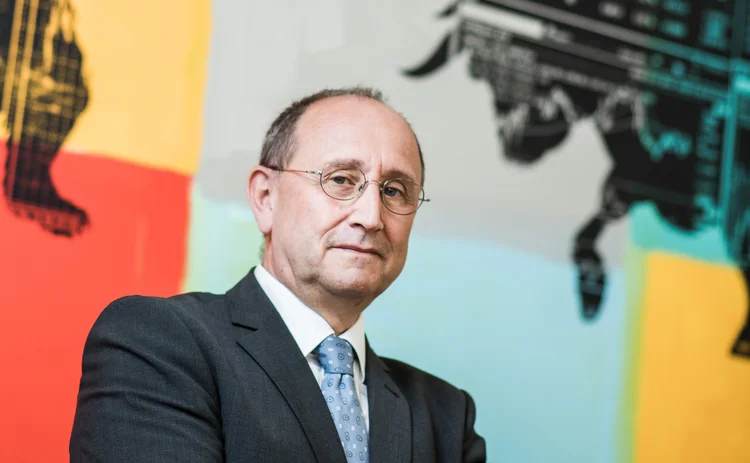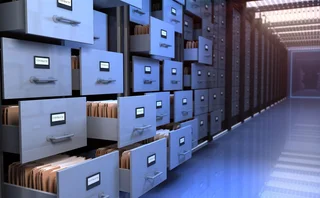Wiener Börse Feels the Need for Speed with T7 Upgrade
The exchange has replaced its Xetra Classic infrastructure with Deutsche Börse’s T7 trading technology

Two years after its initial announcement, Wiener Börse has completed the replacement of its legacy infrastructure. The new system, created by its long-time partner, Deutsche Börse, currently serves most asset classes being traded by the venue, which is also known as the Vienna Stock Exchange.
The shift was one of the biggest technical developments the Austrian exchange—one of the oldest in the world, having been established in 1771—has undergone in quite some time. CTO Ludwig Nießen explains why it was a much-needed operation. The interview below has been edited for clarity and length.
Waters: You recently unveiled your new trading system, which uses Deutsche Börse’s T7 technology. To what extent did incoming regulations such as the review of the Markets in Financial Instruments Directive (Mifid II) prompt the decision to upgrade?
Nießen: Mifid is, of course, a big topic. As a regulated market, you have to be compliant, but this is not unique to T7. Other systems we looked at, also fulfilled the regulatory requirements. It was an important point in our consideration, but not the decisive one.
So what was the decisive point?
It was the strong request from our customers. You may be aware that many of our customers also have connections to Frankfurt [Stock Exchange] and Deutsche Börse, and for them, it’s important to be using one technology base. We thoroughly looked into T7, we analyzed Millennium from London Stock Exchange, as well as Optic from Euronext, and we spent quite some time before we took the decision in 2015 in favor of T7. We really looked into these three systems, we went there, we discussed them with the developers, we looked into the architecture and decided that we should choose the T7.
What was different with T7?
On a technical and functional level, all three are similar. The only remaining difference is the provider. The key for us was that we have been running for 18 years now on Xetra with our partner Deutsche Börse, we know what we buy and what we get. This is one very strong reason. The other was the change in costs. If you have to change both the provider and the system, then you certainly have higher costs and risks.
What types of risks are involved in this process?
You have to see it from a market perspective: You have to consider the regulatory impact; what the market provider has; and of course, the risk of losing members through the process. There are many risk factors but the priority is to maintain continuous market operation. If you fundamentally change your system, you risk major disaster, no matter how well you are prepared.
Technically speaking, what are differences between your previous platforms and T7?
Initially, we believed that T7 was just a bigger upgrade of the classic system. Soon we learned that it is, technically speaking, a new system. The technology is based on Linux, so you can have it in the cloud as well.
Your system is the exact same as what Deutsche Börse uses?
There were some functionalities we wanted to have which were not available in T7, so there was some kind of data analysis of what is going to happen with T7. We didn’t ask for a specific Viennese T7, we decided to use the mainstream T7 in order to be as close as possible to Frankfurt. In the summer of 2016, we started the migration process, which lasted a whole year and we also started preparation to link all other areas, including market supervision, market dissemination and so forth that are maintained in Vienna with T7.
What were the major challenges you faced migrating to T7?
The major challenge was the integration into our existing infrastructure. Also, we still have a couple of asset classes in Xetra like bonds and structured products. They’ll remain there for one more year until T7 is capable of handling them. That’s what added extra complexity since we have to run T7 in parallel with the old system.
Also, because the system was not quite ready, T7 was developed at the same time as we were planning and adopting our own systems—it was only recently launched by Deutsche Börse itself. T7 for shares was also new for Deutsche Börse and that’s why its resources were occupied with its own migration. I would say we were a bit stressed because of that.
So, what changes will your customers see with this new system?
For high-frequency and institutional customers, the system is much faster. It’s ten times faster than the old system, actually. The information about the market is much more detailed, people and traders see everything, whereas Xetra just provided snapshots. Certain market views are accumulated over 250 milliseconds in T7—the full order book, each order is visible. The transparency is much higher, the performance is much better. The system is modern and has smart architecture. It’s for users that rely on speed and performance. The end customers can also profit from new smart order-types.
And how did it change your operations?
We saw that we had to adapt our end-of-day business processes somewhat. We are now in a shared infrastructure, which means we lost a bit of independence, but not on a significant level. When it comes to after-day operations the report generation is a little slower than we used to have.
Will your partner exchanges shift to T7 as well?
Well, we still use Xetra classic for our exchange services to Budapest, Ljubljana, Prague, and Zagreb. Those exchanges remain for the time being on Xetra, they will follow once Wiener Börse moves completely to T7. It’s much more practical for our partner exchanges to do it that way. It would be too much work and effort to move a couple to T7 shares and still maintain bonds on Xetra infrastructure, for instance.
Only users who have a paid subscription or are part of a corporate subscription are able to print or copy content.
To access these options, along with all other subscription benefits, please contact info@waterstechnology.com or view our subscription options here: http://subscriptions.waterstechnology.com/subscribe
You are currently unable to print this content. Please contact info@waterstechnology.com to find out more.
You are currently unable to copy this content. Please contact info@waterstechnology.com to find out more.
Copyright Infopro Digital Limited. All rights reserved.
As outlined in our terms and conditions, https://www.infopro-digital.com/terms-and-conditions/subscriptions/ (point 2.4), printing is limited to a single copy.
If you would like to purchase additional rights please email info@waterstechnology.com
Copyright Infopro Digital Limited. All rights reserved.
You may share this content using our article tools. As outlined in our terms and conditions, https://www.infopro-digital.com/terms-and-conditions/subscriptions/ (clause 2.4), an Authorised User may only make one copy of the materials for their own personal use. You must also comply with the restrictions in clause 2.5.
If you would like to purchase additional rights please email info@waterstechnology.com
More on Trading Tech
Recent volatility highlights tech’s vital role in fixed income pricing
MarketAxess’ Julien Alexandre discusses how cutting-edge technology is transforming pricing and execution in the fixed income market amid periodic bouts of volatility
Banks fret over vendor contracts as Dora deadline looms
Thousands of vendor contracts will need repapering to comply with EU’s new digital resilience rules
Where have all the exchange platform providers gone?
The IMD Wrap: Running an exchange is a profitable business. The margins on market data sales alone can be staggering. And since every exchange needs a reliable and efficient exchange technology stack, Max asks why more vendors aren’t diving into this space.
This Week: Trading Technologies completes ANS deal; State Street; Equinix; and more
A summary of the latest financial technology news.
Interactive Brokers looks beyond US borders for growth opportunities
As retail trading has grown in volume and importance, Interactive Brokers and others are expanding international offerings and marketing abroad.
JP Morgan’s goal of STP in loans materializes on Versana’s platform
The accomplishment highlights the budding digitization of private credit, though it’s still a long road ahead.
As data volumes explode, expect more outages
Waters Wrap: At least for those unprepared—though preparation is no easy task—says Anthony.
This Week: ICE Bonds and MarketAxess plan to connect liquidity networks, TS Imagine, Bloomberg, and more
A summary of the latest financial technology news.








